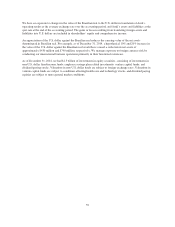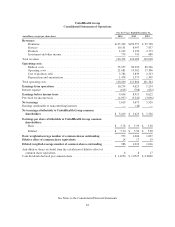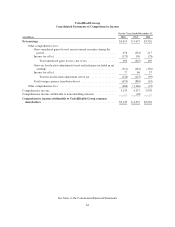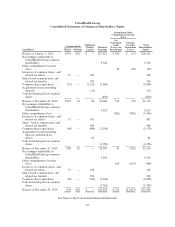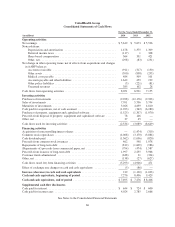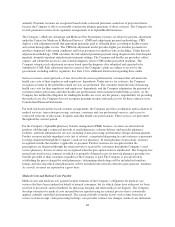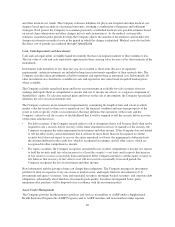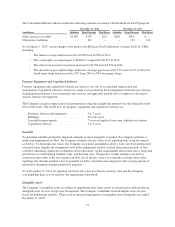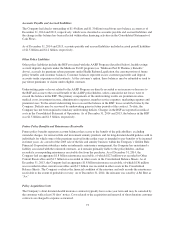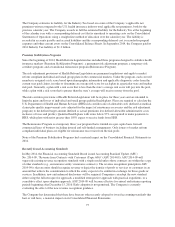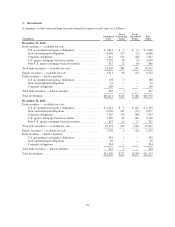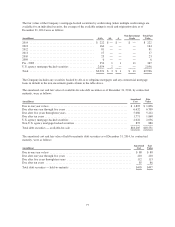United Healthcare 2014 Annual Report Download - page 69
Download and view the complete annual report
Please find page 69 of the 2014 United Healthcare annual report below. You can navigate through the pages in the report by either clicking on the pages listed below, or by using the keyword search tool below to find specific information within the annual report.UnitedHealth Group
Notes to the Consolidated Financial Statements
1. Description of Business
UnitedHealth Group Incorporated (individually and together with its subsidiaries, “UnitedHealth Group” and
“the Company”) is a diversified health and well-being company dedicated to helping people live healthier lives
and making the health system work better for everyone.
Through its diversified family of businesses, the Company leverages core competencies in advanced, enabling
technology; health care data, information and intelligence; and clinical care management and coordination to
help meet the demands of the health system.
2. Basis of Presentation, Use of Estimates and Significant Accounting Policies
Basis of Presentation
The Company has prepared the Consolidated Financial Statements according to U.S. Generally Accepted
Accounting Principles (GAAP) and has included the accounts of UnitedHealth Group and its subsidiaries.
On January 1, 2014, the Company realigned certain of its businesses to respond to changes in the markets it
serves and the opportunities that are emerging as the health system evolves. The Company’s Optum business
platform took responsibility for certain technology operations and business processing activities with the
intention of pursuing additional third-party commercial opportunities in addition to continuing to serve
UnitedHealthcare. These activities, which were historically a corporate function, are now included in
OptumInsight’s results of operations. The Company’s reportable segments remain the same and prior period
segment financial information has been recast to conform to the 2014 presentation. See Note 13 for segment
financial information.
Use of Estimates
These Consolidated Financial Statements include certain amounts based on the Company’s best estimates and
judgments. The Company’s most significant estimates relate to estimates and judgments for medical costs
payable and revenues, valuation and impairment analysis of goodwill and other intangible assets, estimates of
other policy liabilities and other current receivables, valuations of certain investments, and estimates and
judgments related to income taxes and contingent liabilities. Certain of these estimates require the application of
complex assumptions and judgments, often because they involve matters that are inherently uncertain and will
likely change in subsequent periods. The impact of any change in estimates is included in earnings in the period
in which the estimate is adjusted.
Revenues
Premium revenues are primarily derived from risk-based health insurance arrangements in which the premium is
typically at a fixed rate per individual served for a one-year period, and the Company assumes the economic risk
of funding its customers’ health care and related administrative costs.
Premium revenues are recognized in the period in which eligible individuals are entitled to receive health care
benefits. Health care premium payments received from the Company’s customers in advance of the service
period are recorded as unearned revenues. Fully insured commercial products of U.S. health plans, and beginning
in 2014, Medicare Advantage and Medicare Prescription Drug Benefit (Medicare Part D) plans with medical loss
ratios as calculated under the definitions in the Patient Protection and Affordable Care Act and a reconciliation
measure, the Health Care and Education Reconciliation Act of 2010 (together, Health Reform Legislation) and
implementing regulations, that fall below certain targets are required to rebate ratable portions of their premiums
67




